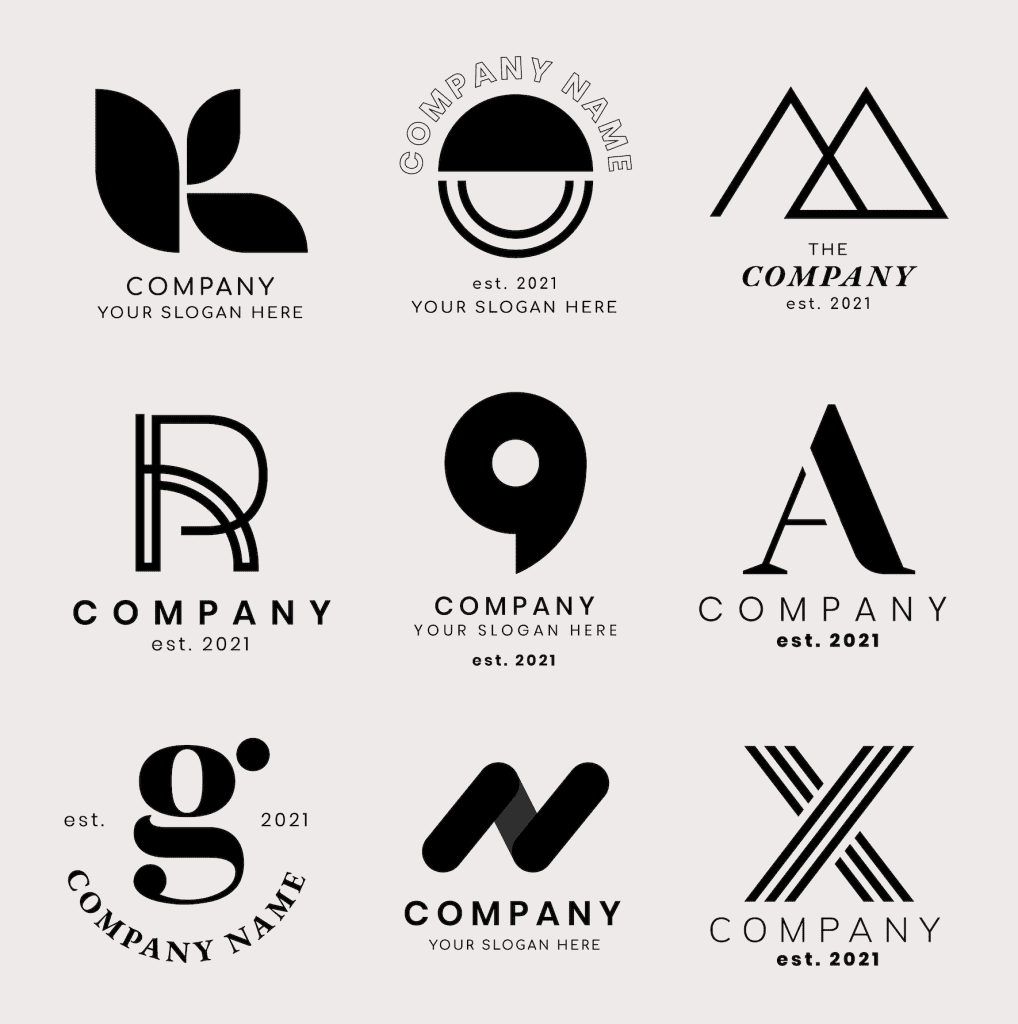In a world inundated with information and sensory overload, there is a growing movement toward simplicity and minimalism. This shift extends beyond physical spaces and lifestyles to the realm of graphic design, where the use of clean lines, uncluttered layouts, and simple typography is gaining momentum. With the advent of the digital age, designers are harnessing the power of minimalism to create impactful and memorable visual experiences. In this article, we explore the profound influence of minimalism on graphic design and delve into the transformative potential of simple fonts, marks, and typography.
The Rise of Minimalism
Minimalism, in its essence, is the art of reduction, stripping away excess to distill the core essence of a design. This approach rejects embellishments and intricate details, favoring simplicity, clarity, and precision. In the realm of graphic design, minimalism allows for enhanced communication, as it eliminates distractions and enables viewers to focus on the message at hand. By embracing negative space, minimalism gives visual elements room to breathe and amplifies their impact.
Simplistic Fonts: Capturing Essence with Precision
Fonts play a pivotal role in visual communication, acting as a vehicle for expressing tone, personality, and brand identity. In the digital age, designers have an extensive repertoire of fonts at their disposal, each evoking a distinct emotion or conveying a specific message. Simple and clean typefaces, such as sans-serif fonts, have emerged as prominent choices for minimalistic design, exuding elegance, sophistication, and modernity. The absence of decorative elements in these fonts ensures legibility and enhances the overall aesthetic appeal, allowing the words to take center stage.
Marks: The Power of Simplicity and Symbolism
Marks, or logos, serve as powerful visual symbols that encapsulate the essence of a brand or concept. Minimalist marks embrace simplicity, employing clean lines and basic shapes to convey meaning in the most concise and evocative manner possible. These stripped-down visual representations have the capacity to leave a lasting impression on viewers, triggering instant recognition and establishing a strong brand identity. By embracing minimalism in mark design, brands can communicate their values and evoke emotions with remarkable efficiency.
Typography: Harmonizing Words and Design
Typography, the art of arranging type, is a crucial component of graphic design that directly impacts legibility, readability, and overall aesthetic appeal. In the digital age, designers have access to an extensive array of typefaces, enabling them to experiment and create harmonious compositions that resonate with viewers. Minimalist typography focuses on clarity and simplicity, employing clean lines, generous spacing, and strategic alignment. This intentional use of typography allows the written word to seamlessly integrate with other visual elements, creating a cohesive and visually compelling design.
The Power of Less: Impact and Engagement
Minimalism in graphic design offers numerous benefits beyond aesthetics. By decluttering designs and embracing simplicity, designers facilitate quick comprehension and engagement with their intended audience. Minimalist designs often have an inherent timelessness, as they transcend trends and fads, standing the test of time. Moreover, minimalist designs lend themselves well to responsive and adaptive design principles, ensuring a seamless experience across various digital platforms.
Closing Thoughts
In the fast-paced digital age, where attention spans are limited and visual stimuli abound, embracing minimalism in graphic design proves to be a powerful strategy. By harnessing the simplicity of fonts, marks, and typography, designers can create impactful and visually striking designs that communicate messages with precision and clarity. Minimalism empowers brands and designers to capture the essence of their identity and forge deeper connections with their audience. So, let us embrace the power of minimalism, as it unlocks new possibilities in the digital landscape and revolutionizes the way we communicate visually. By stripping away the superfluous and focusing on the essential, we can create designs that resonate on a profound level, transcending cultural barriers and leaving a lasting imprint in the minds of viewers.
As we navigate the ever-evolving digital landscape, it is crucial to remember that simplicity is not synonymous with blandness. Minimalism, when executed with thoughtfulness and intention, has the power to evoke emotions, convey complex ideas, and ignite imagination. By embracing the philosophy of “less is more,” designers can tap into the innate power of negative space, allowing designs to breathe and speak with a clarity that captivates the senses.
The influence of minimalism extends beyond visual appeal; it cultivates a mindset of intentionality and mindfulness. As we pare down our designs to the essentials, we also become more aware of the impact of each element, each line, and each curve. This conscious approach leads to greater focus, efficiency, and effectiveness in delivering messages and telling stories.
In a world where our attention is incessantly pulled in multiple directions, the strength of minimalist design lies in its ability to create moments of respite and visual harmony. By embracing simplicity, designers can guide viewers’ eyes to the focal point of their designs, enhancing comprehension and leaving a lasting impression. Minimalism fosters an environment where clarity thrives, ensuring that every visual element serves a purpose and contributes to the overall narrative.
However, it is important to note that embracing minimalism does not mean abandoning creativity or variety. The world of simple graphic design, fonts, marks, and typography is vast and diverse, offering a multitude of possibilities for designers to explore and innovate. Minimalism should be seen as a guiding principle, a framework within which designers can experiment, push boundaries, and create compelling designs that stand out in a crowded digital landscape.
As we embrace the power of minimalism and its synergy with digital design, let us not forget the importance of balance. While simplicity reigns supreme, there is room for carefully selected embellishments and details that enhance the overall aesthetic appeal and add a touch of personality. It is through the delicate interplay between simplicity and nuance that truly exceptional designs emerge.
In conclusion, as the digital age continues to shape our visual experiences, embracing minimalism in graphic design becomes more relevant and impactful than ever before. The power of simple fonts, marks, and typography lies in their ability to distill complex ideas into elegant and resonant visual forms. By leveraging the art of reduction, designers can create designs that not only communicate effectively but also engage and inspire audiences in ways that transcend time and trends. So, let us embrace the minimalist movement, unlock its transformative potential, and shape a visual landscape that celebrates simplicity, clarity, and timeless beauty.





















